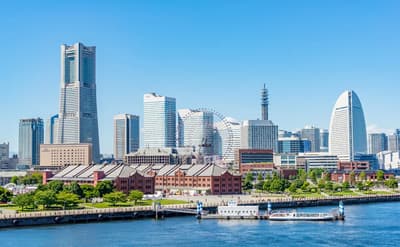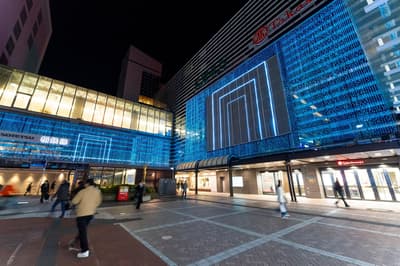Yokohama has flourished as a port town since the opening of Japan to the outside world in the Edo period. In addition to the lively Chinatown filled with merchants and the settlement where foreigners once lived, there are many sightseeing spots such as parks built on reclaimed land, night view spots, shopping spots, amusement parks, and aquariums, making it difficult to choose where to go sightseeing.
In this issue, we will introduce 30 spots on the main road that you should not miss when sightseeing in Yokohama.
The first place to visit when sightseeing in Yokohama! 11 classic recommended spots
Yokohama Red Brick Warehouse

The Red Brick Warehouse is one of Yokohama’s most famous tourist attractions. This historical brick structure was built between the late Meiji and early Taisho eras and was intended as a model warehouse for the nation. During World War II, it was used as a supply center for military supplies during the war, and after the war, it was used as a port command post for the U.S. military.
Later, in 2002, it was reopened as a cultural and commercial facility, retaining the appearance of those days.
More than 50 restaurants and cafes line the warehouse, and concerts and plays are held throughout the year in the multipurpose space. In addition, the event plaza in front of the warehouse hosts large-scale seasonal events, such as a beer garden in the summer and an ice skating rink and Christmas market in the winter. At night, the warehouse is lit up in orange, making it a popular nighttime spot.
Yamashita Park

Yamashita Park was opened in 1930. It is a park with a great view overlooking the sea, where visitors can see the Yokohama Bay Bridge and ships passing by in the harbor. It is also known for its roses, and in spring and fall, the “Future Rose Garden” is filled with many colorful roses, making it a popular photo spot.
The many monuments and the Indian Water Tower, an Indian-style water fountain donated by the Indian Association in Japan, are also noteworthy. The Indian Water Pagoda is of great historical value in the modern architecture of Yokohama and is designated as a historical building by the City of Yokohama.
Yamashita Park, with its great views and cosmopolitan atmosphere, is a great place for a stroll.
Yokohama Landmark Tower

Yokohama Landmark Tower is a skyscraper with 70 floors above ground and a height of 296 meters. It is the symbolic tower of Yokohama with various facilities such as offices and hotels, a shopping mall, and an observation floor.
The Royal Park Hotel occupies the 52nd floor and above, while the lower floors are the Landmark Plaza with its shopping mall and restaurants. In addition, the Sky Garden, an observation floor on the 69th floor, offers views of Tokyo Tower, Tokyo Sky Tree, Shinjuku, and even Mount Fuji on a clear day.
It is also a popular spot for viewing the fantastic night view created by the Minato Mirai cityscape and cruise ships.
Yokohama Chinatown

Yokohama Chinatown was created and developed when Chinese foreign ministers who came to Japan with Westerners after the opening of the port of Yokohama began doing business. Today, it is a tourist spot with more than 600 Chinese restaurants, as well as general stores, craft shops, cafes, souvenir shops, and even fortune-telling stores.
Chinatown can be found in many places around the world, but Yokohama Chinatown is one of the largest Chinatowns in the world. Visitors can enjoy a wide range of Chinese cuisine, from Cantonese, Shanghai, Peking, and Sichuan cuisines to dim sum restaurants, medicinal herbs restaurants, hot pot restaurants, and restaurants specializing in shark fins.
The unique gates that can be seen throughout Chinatown are called “páilou,” which were built based on the philosophy of feng shui (Chinese geomancy), and there are currently ten such buildings in Yokohama Chinatown.Each gate is painted in blue, red, white, and black, colors based on the five elements of yin and yang. In addition, the four deities of the four directions, blue dragon in the east, red bird in the south, white tiger in the west, and black Tortoise in the north, which are deeply believed by people as the guardian deities of each direction, are placed.
You may also want to experience Chinese history and food culture in Yokohama Chinatown.
Yokohama Hammerhead

A complex with terminal functions for cruise ships, it will open in Minato Mirai in October 2019 and is surrounded by the sea on three sides of the facility.
The theme is food, and there is a wide variety of stylish, urban restaurants. The atrium space connecting the first and second floors is decorated with ocean-themed art objects, and the hammerhead crane that gave the building its name rises from the hammerhead deck on the second floor.
Yokohama Hakkeijima Sea Paradise

Yokohama Hakkeijima Sea Paradise is an aquarium complex that includes an aquarium, amusement park, restaurants, and hotel.
Sea Paradise consists of four aquariums. Each has different features and can be enjoyed by families.
- Aqua Museum:One of Japan’s largest Aqua Museums with 700 species and 120,000 living creatures
- Dolphin Fantasy: where dolphins can be seen swimming from different perspectives
- Fureai Lagoon: where you can interact with marine creatures
- Umi Farm: a fun place to learn about the ocean and food education
In the attraction corner, visitors can play on standard rides such as merry-go-rounds, buffets, and roller coasters, as well as tube-type rides that take them down a raging river. In addition, there are a variety of restaurants and food courts, including a restaurant where you can enjoy authentic seafood rice bowls, a handmade barbecue, and a café that sells lovely-looking sweets. This is a sightseeing spot that can be enjoyed by anyone.
Yokohama Cosmoworld

Yokohama Cosmoworld is an urban amusement park with excellent accessibility, located about a 2-minute walk from Minato Mirai Station. The park has about 30 different attractions, including roller coasters and merry-go-rounds. The park consists of three zones, “Burano Street Zone,” “Wonder Amuse Zone,” and “Kids Carnival Zone,” respectively, and admission is free.
Among the many attractions, the most popular is the Cosmo Clock 21, a Giant Ferris Wheel that serves as a symbol of Yokohama. It is the world’s largest Ferris wheel with a clock function and offers a panoramic view of Yokohama in a 15-minute walk in the air.
The food court sells crepes, sponge cakes, fries, ice cream, and other items that can be eaten and enjoyed. Enjoy the view of Minato Mirai while having a good time!
Hill park with a view of the harbor

Hill park with a view of the harbor is located on a small hill overlooking the Port of Yokohama. It is also a great place to view the Yokohama Bay Bridge.
It is also a popular place for roses and is known as the “Garden of English Roses. Roses are at their best twice a year, from mid-May to mid-June and from mid-October to mid-November.
Cupnoodles Museum
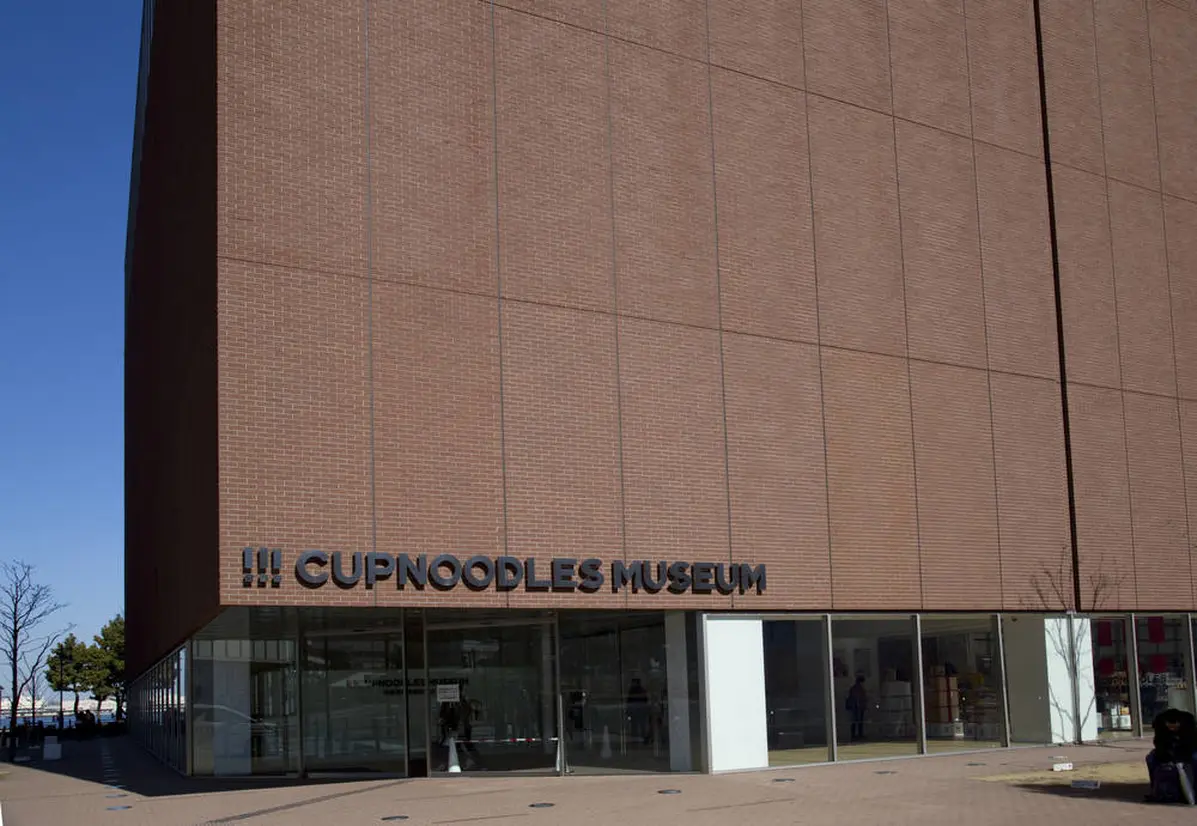
The Cup Noodle Museum is a hands-on museum where visitors can enjoy learning about the history and manufacturing process of Cup Noodles. Momofuku Ando, the founder of Nissin Foods, invented Chicken Ramen, the world’s first instant ramen. His out-of-the-box creative thinking had a great impact on the world’s food culture. The Cupnoodles Museum allows visitors to experience his creative thinking through a variety of exhibits.
There are many fun exhibits and attractions such as Chicken Ramen Factory where you can make your own Chicken Ramen, CUPNOODLES Park where you can experience the Cup Noodle production process by becoming a noodle yourself, My CUPNOODLES Factory where you can make your one and only original Cup Noodle in the world, and the Cup Noodle History Cube where you can see and feel the transition of Cup Noodles up to the present. The Instant Noodles History Cube allows visitors to see and feel the history of Cup Noodles.
Pacifico Yokohama

Pacifico Yokohama is one of the world’s largest MICE complexes, located on the waterfront of Minato Mirai 21, a redevelopment area facing the Port of Yokohama. It is famous as a new center for business travel, and the outdoor facilities at Pacifico Yokohama are a popular spot for relaxing and unwinding.
There are three outdoor areas: Rinkai Park, Koryu Zone(International Exchange Zone), and Pukarisanbashi Pier. Rinkai Park is a grassy park with a view of Yokohama Port and the best spot for night views. The Koryu Zone has a beautiful circular plaza, open-air decks, and terraces that are perfect for strolling. Pukarisanbashi Pier is where Sea Bus and Yokohama Port cruise ships arrive and depart, and is the gateway to the sea in Minatomirai.
Enjoy a relaxing moment in the stylish and innovative outdoor space of Pacifico Yokohama.
Kanagawa Prefectural Museum of Cultural History
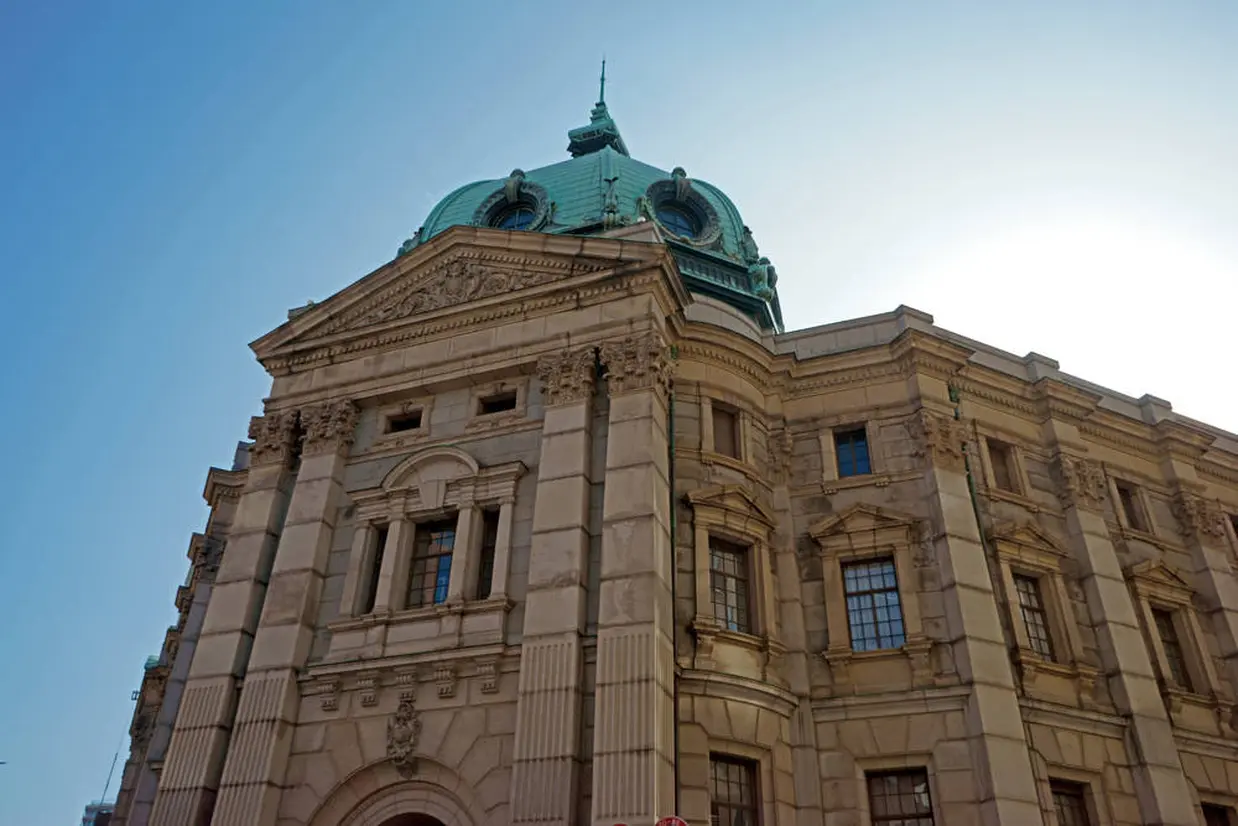
Kanagawa Prefectural Museum of Cultural History is a museum that introduces the culture and history of Kanagawa Prefecture. The museum was built in 1904 as the head office of the Yokohama Seikin Bank. It was designated a National Important Cultural Property in 1969.
In 1995, it was designated as a national historic site as an important site that supported the industrial economy in the modern era.
At Kanagawa Prefectural Museum of Cultural History, visitors can learn about the history of Kanagawa, which has been divided into five historical divisions from prehistory to the present day, step by step. The museum also has valuable visual materials that can only be seen here and a library that is open to the public, so many visitors come to the museum for study and research.
Two recommended shopping spots
Motomachi Shopping Street

Motomachi Shopping Street is a shopping street that developed from a collection of stores that served foreign customers at the time of the opening of the port of Yokohama. The main street is 600 meters long and is home to clothing stores selling many elegant items, long-established confectionary shops, and supermarkets selling organic products. The back streets are lined with cute cafes, popular restaurants, and unique general stores.
Seasonal events are also very popular, especially the Charming Sale held twice a year in February and September, which attracts many tourists. You may want to take a stroll down the somewhat exotic Motomachi Shopping Street to find your favorite store.
MARINE & WALK YOKOHAMA

MARINE & WALK YOKOHAMA, located near the Red Brick Warehouse, opened in 2016 as a new symbol of the Yokohama Minatomirai and Shinko area. With numerous stores selling imported brands and select items, the store street is a space with the sea and greenery in mind, and is unlike anything else in Japan.
It features a café and restaurant with terrace seating overlooking the red brick warehouse, creating a sense of freedom. There is also a restaurant where you can eat with your pets, a rest area, a leash holder, and even a water fountain, so you can stop by while taking a walk with your pets. This is definitely a spot you want to stop by when you visit Red brick warehouse .
Two recommended experiences to enjoy Yokohama more
Skyduck Yokohama
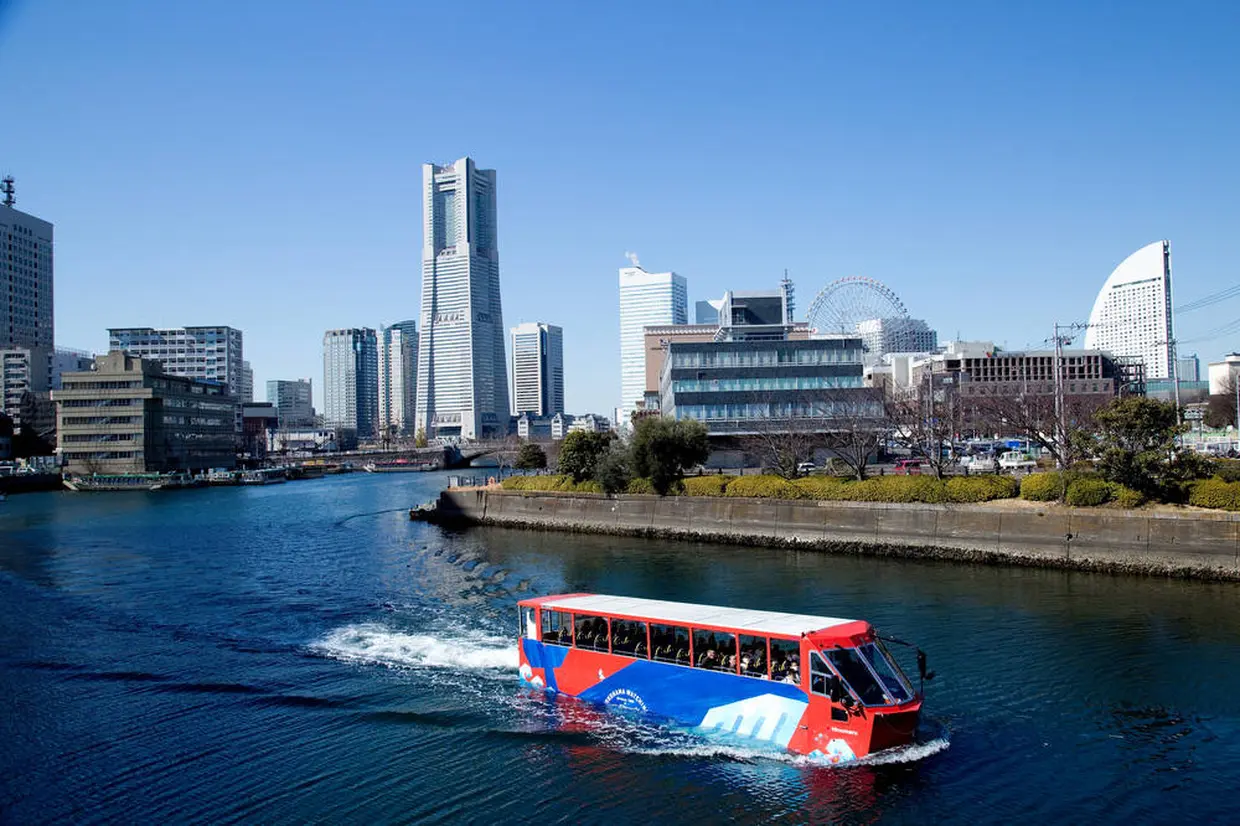
Yokohama is one of Japan’s leading international port cities. While walking around the port city is a great way to enjoy the port, the Sky Duck amphibious bus is a great way to enjoy the port of Yokohama from the water. The bus makes a big splash as it enters the water.
There are two ticket booths, one at the Nipponmaru Memorial Park and the other at the Red Brick Warehouse.
Yoshu hanten

You can taste a variety of Chinese dishes in Chinatown, but making your own is a rare experience. At Yoshu hanten, the main restaurant in Chinatown, visitors can try their hand at making steamed buns and dumplings. The dough and filling are prepared by the restaurant, so it is easy for anyone to create authentic tastes.
Since the plan includes a meal, you can enjoy Chinese food culture through handmade food. Your own personalized steamed buns and dumplings are sure to taste even better.
Active sightseeing! 2 recommended zoos
Nogeyama Zoo

The Nogeyama Zoo has been familiar to generations of locals as a familiar zoo. It is only a 15-minute walk from Sakuragicho Station in the heart of Yokohama, yet admission is free.
The concept is “a zoo that anyone can easily visit and enjoy, and a zoo where small children can encounter animals for the first time, interact with them, and experience life,” and about 100 kinds of animals are on display. There is a petting area for small animals, which is sure to please small children.
It is also famous as a spot to enjoy cherry blossoms in spring, attracting many cherry blossom viewers.
Yokohama Zoo (Zoorasia)

Yokohama Zoo (Zoorasia) exhibits 750 exhibits of 100 rare species of animals in 8 zones according to climate zones and regions of the world. The animals that can be observed vary according to each climate and region. The name “Zoorasia” is a compound of the words “ZOO” and “EURASIA”, which is an image of vast nature.
The park’s restaurants are also popular, where visitors can enjoy exotic delicacies such as moushikaki (beef skewers), a typical East African dish, and muamba rice, an African dish selected as one of the world’s 10 most delicious foods, as well as hamburgers and ice cream for sale.
No need to worry even if it rains! Three relaxing indoor sightseeing spots
Kirin Beer Yokohama Factory

In fact, Yokohama is the birthplace of the Japanese beer industry. Located in Yokohama, Kirin Beer Yokohama Factory is a great place for beer lovers to learn about beer and enjoy beer to their heart’s content.
During the factory tour, visitors can observe the entire process from tasting malt and hops to how beer is fermented and packaged from start to finish. After the tour, you will of course be able to taste the freshly brewed beer.
The factory also sells limited-edition souvenirs such as tumblers and beer label coasters. This is a factory tour that adults can get into. If you like beer, this is a sightseeing spot you will want to visit at least once.
Yokohama Minatomirai Manyo Club

Yokohama Minatomirai Manyo Club is a famous healing spot in Yokohama. It is an emotional hot spring spot located in a spacious eight-story building. Visitors can enjoy hot springs brought in daily by tanker truck from Atami Onsen and Yukawa Onsen, which are known as famous hot springs.
It is no exaggeration to say that this is a comprehensive healing facility that includes not only hot springs but also a restaurant, relaxation room, esthetic salon, and game corner. Overnight stay packages are also available, so you can enjoy sightseeing in Yokohama to the fullest during the day, and then relax and soak in the hot springs at night to relieve your fatigue.
Mitsubishi Heavy Industries

Mitsubishi Heavy Industries is a place where the technologies of the Mitsubishi Heavy Industries Group are introduced. It is a hands-on museum where visitors can learn about cutting-edge science and technology that they do not have much opportunity to experience in their daily lives while having fun. The museum store sells limited-edition goods only available here, and even space food.
You can see the mechanisms and technologies of aircraft, rockets, submersible research vessels, etc., which will tickle your intellectual curiosity.
Four spots to experience Yokohama’s culture
Yokohama Noh Theater
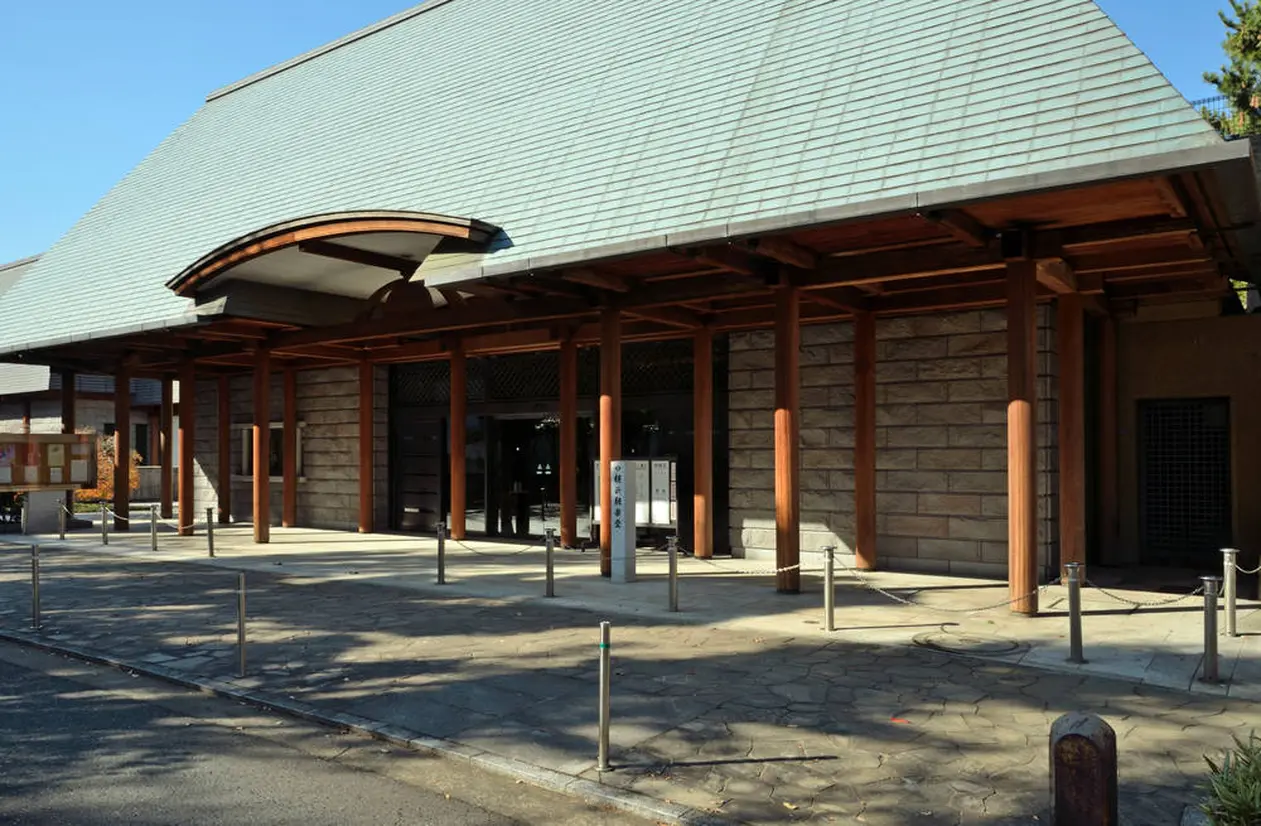
The Yokohama Noh Theater is said to be the oldest Noh stage in the Kanto area. It is designated as a cultural asset by the City of Yokohama and is very valuable in the history of architecture and Noh theater.
The Yokohama Kyogen Do is another popular event, where for 2,200 yen you can enjoy two pieces of Kyogen with commentary.
Yokohama Museum of Art

The beautifully symmetrical Yokohama Museum of Art opened in 1989. The Grand Gallery in the atrium is a distinctive design and a popular photo spot.
The museum has seven exhibition halls, an art information center with over 100,000 books, and ateliers where various workshops and seminars are held, making it one of the largest museums in Japan.
A variety of special exhibitions and collection exhibitions are held throughout the year. The museum collects a variety of domestic and international art, including works by artists closely associated with Yokohama from the end of the Edo period to the Meiji period, as well as works by world-famous artists such as Picasso and Dali.
The Osaragi Jiro Memorial Hall

The arched roof and red brick exterior of the Osaragi Jiro Memorial Hall is located on the south side of the observation deck in Harbor View Park. The museum was built to commemorate the achievements of Jiro Osaragi, a writer associated with Yokohama.
Jiro Osaragi was born in Yokohama and is famous for writing many works set in Yokohama, and this red exterior building has become a popular photo spot. He was also known as a cat lover, and many cat figurines from his own collection are on display in the museum.
Yokohama Sankeien Garden

Sankeien Garden is a Japanese garden created by Sankei Hara, a businessman who made his fortune in the silk trade. It is as large as four times the size of the Tokyo Dome.
Seventeen historically valuable buildings, relocated from Kyoto and Kamakura, are located in the park. Ten of these buildings are designated as important cultural properties, and three are designated as tangible cultural properties by the City of Yokohama.
It is one of the most popular spots in Yokohama for Japanese culture, and is especially popular among tourists from overseas. Visitors can enjoy the ever-changing natural scenery throughout the year, including plum blossoms, cherry blossoms, azaleas, and autumn leaves.
Four spots to experience Yokohama’s history
Yokohama City Port Opening Memorial Hall

The Yokohama City Port Opening Memorial Hall was built in 1917. It is made of brick and granite and features a red brick clock tower. The main building of the Kanagawa Prefectural Government is called the King, the Yokohama Customs House the Queen, and the Yokohama Port Opening Memorial Hall the Jack, together they are known as the Yokohama three towers.
The stained glass windows on the second floor are a must-see as they are designated as a national important cultural property.
NYK Hikawamaru

The Hikawa Maru was a high-speed cargo ship that entered service on the trans-Pacific Seattle route in 1930. It was a representative ship of its time, equipped with a large diesel engine, which was the most advanced at the time, and the first-class cabins were decorated in the Art Deco style by a French designer.
Famous for having the comedy king Chaplin on board, the ship served as a naval hospital ship during World War II. She was hit by lightning a total of three times before the end of the war, but still did not sink. The Hikawa Maru was the only large NYK ship that escaped sinking.
With such a history, the Hikawa Maru was renovated in 2006 and reopened in 2008 as the NYK Hikawa Maru. Currently, the ship is moored in front of Yamashita Park. Visitors can tour the ship’s interior, including the passenger and crew areas, and learn about its history in the exhibition area. From the deck, visitors can enjoy a spectacular view of Yokohama Harbor.
Yokohama Kuan Ti Miao (Kanteibyo)
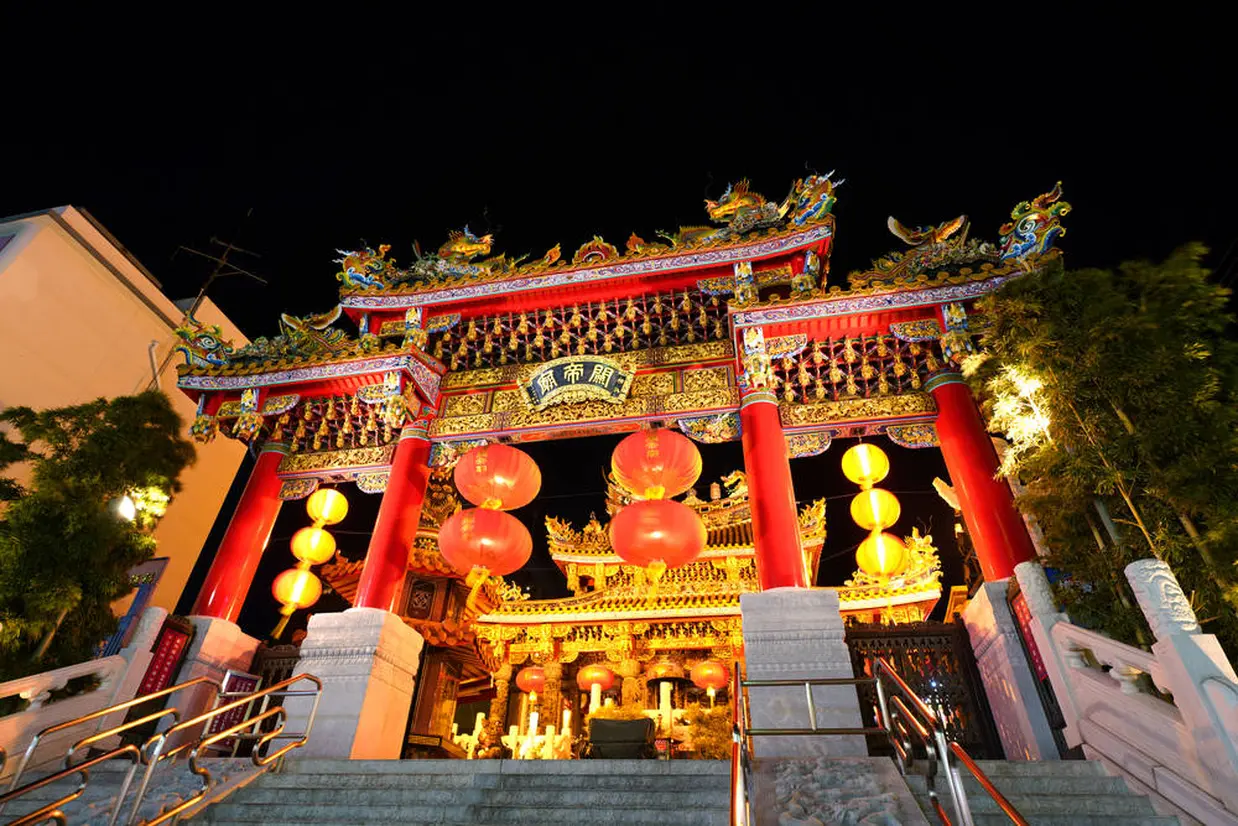
This power spot is located in Yokohama Chinatown. Soon after the Port of Yokohama was opened, many Chinese merchants began to live in the foreign settlement area. It is said that it was during this time that a Chinese man created a small shrine in 1862. It is still a beloved place as a spiritual center for Chinese people living away from their homeland.
The deity enshrined here is Guan Yu, a military commander active during the Three Kingdoms period. He was not only a famous military commander, but also the inventor of the ledger and an expert in finance, and is worshipped as the god of business prosperity.
Kanagawa Prefectural Government

The Kanagawa Prefectural Government Main Building is one of the most representative modern buildings in Yokohama. The “King’s Tower” towers over the exterior of the building, which features Art Deco style-influenced geometric pattern decorations. Often featured on TV and in magazines, the Kanagawa Prefectural Government Building is actually the first nationally registered tangible cultural property in the prefecture.
And from the rooftop observation deck, you can see the Bay Bridge, the Red Brick Warehouse, and the Yokohama Landmark Tower. The elaborate design of the Kanagawa Prefectural Government Headquarters, from the exterior to the interior, is well worth a visit.
There’s more! 2 interesting museums
Hara Model Railway Museum

The museum exhibits approximately 1,000 model trains selected from the collection of Shintaro Hara, a world-renowned model railroad artist and collector. Many of the models feature Japanese, European, and American railroads during the transition from steam to electric locomotives, allowing visitors to see the world’s railroads even while in Yokohama.
What’s more particular is that the model is a perfect reproduction of a real railroad car. Electricity runs through the overhead wires, and the model runs on two steel rails. So even the running sound is just like the real thing.
A diorama recreating the Bashamichi and Chinatown areas, as well as antique railroad toys, are also on display, giving visitors a chance to see a valuable collection.
Shin-Yokohama Ramen Museum
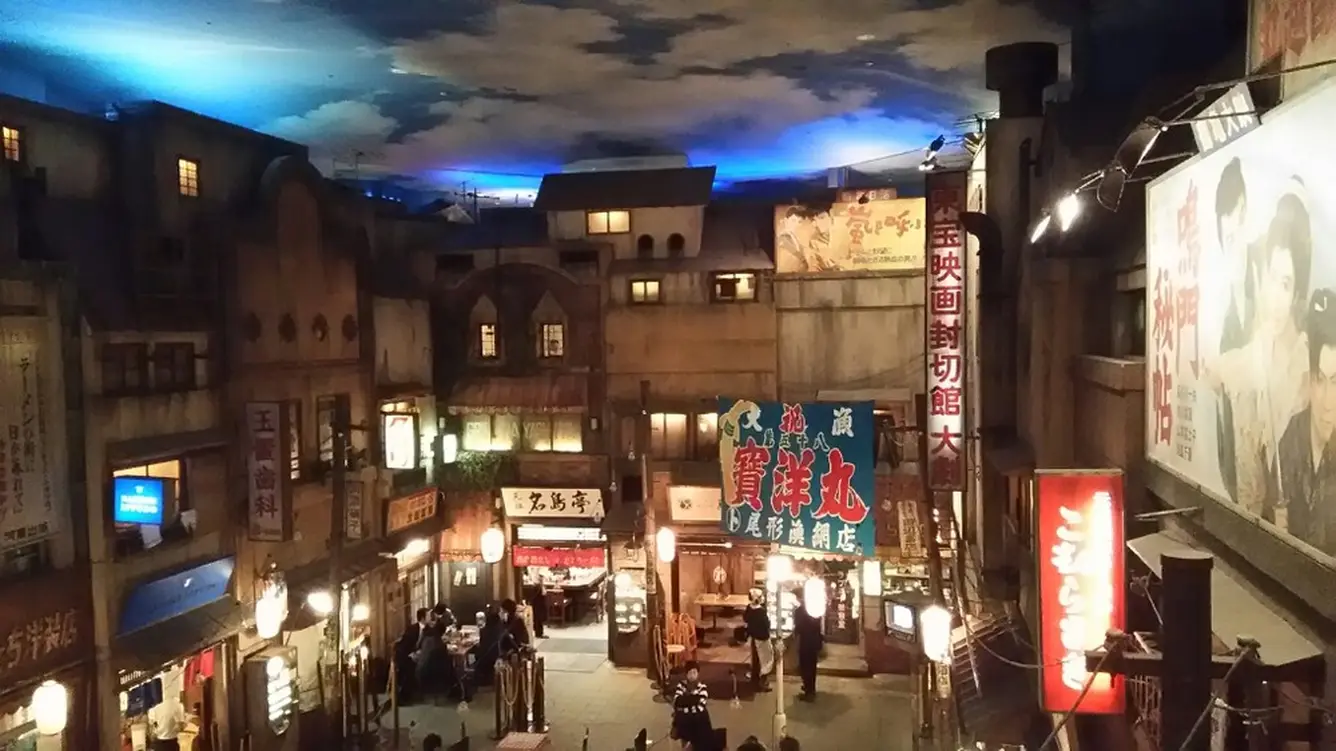
The Shin-Yokohama Ramen Museum is a food amusement park that recreates a retro townscape from the Showa period inside the museum. Ramen restaurants from all over Japan are lined up here, and ramen lovers will love this sightseeing spot, where they can haggle and compare ramen from all over the country.
In addition to a museum section where visitors can learn about ramen culture and history, they can also make ramen. There are also candy stores and snack stores that match the Showa-era streetscape, and many stores where visitors can immerse themselves in a retro world.
In addition, the museum store offers a wide variety of popular souvenir ramen from all over Japan, as well as many limited edition ramen goods available only here. If you like ramen and want to immerse yourself in a retro atmosphere, this is the place for you.
Comments from the Holiday Editors
Yokohama has many indoor and outdoor sightseeing spots, so you can have fun regardless of the weather. Also, while there are zoos, aquariums, and hot springs for families, there are also fun shopping spots for couples and romantic night view spots, making it a fun place to visit with anyone! It is also very accessible from Tokyo.

